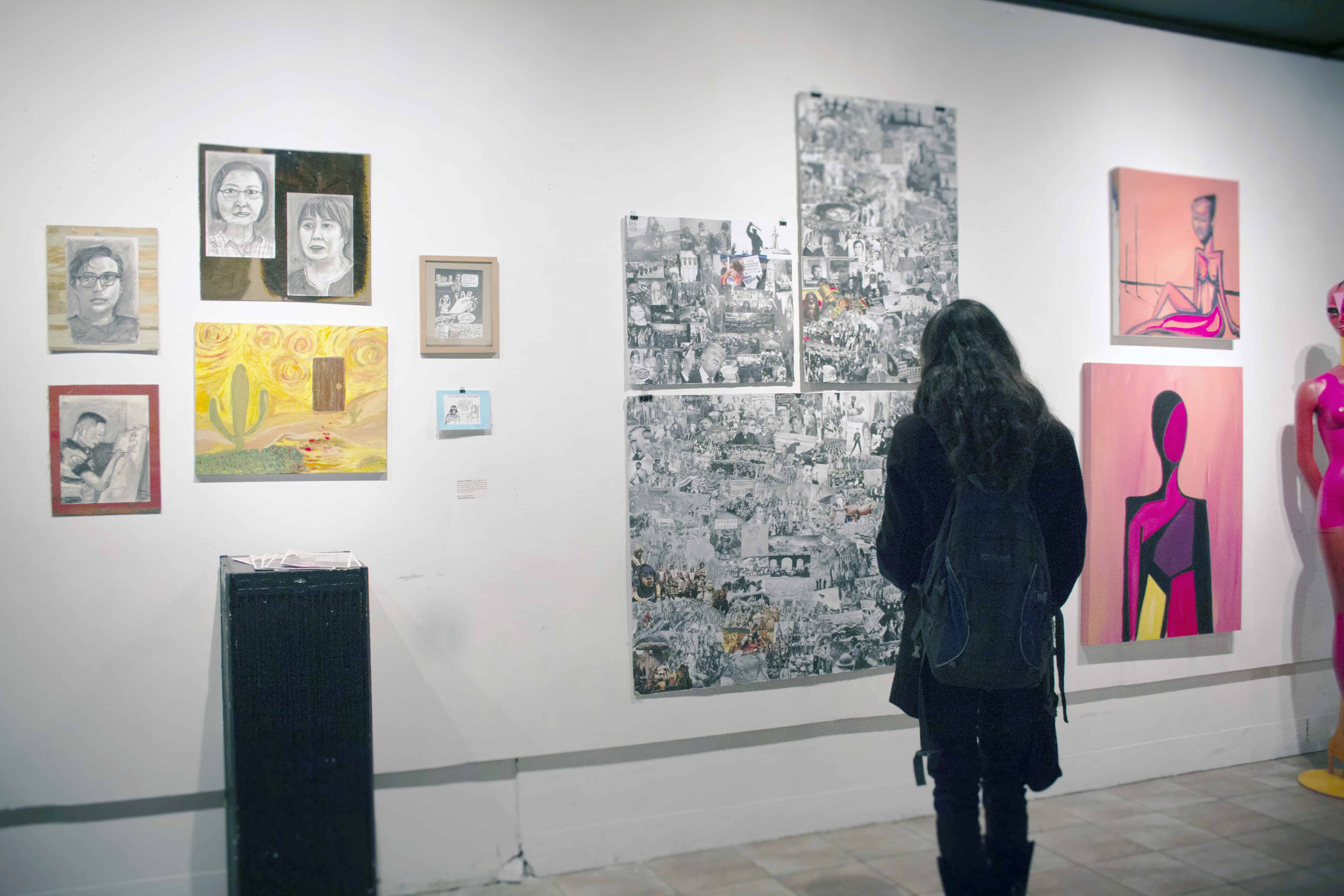Between 2013–2015, only 11 per cent of artists featured in solo exhibitions in major art galleries across Canada were people of colour (POC), which reflects how the art world places POC at a systematic disadvantage. One possible solution to this problem is events like Margin of Eras, a multidisciplinary art exhibit founded by CUE. It seeks to remedy the epidemic of exclusivity experienced by many in Toronto’s art scene.
Margin of Eras opening night took place at Super Wonder Gallery on October 21. The space acted as a canvas for the artists’ eclectic and soulful displays. Photographer Jah Grey’s label read: “I’m working to redefine masculinity and embrace vulnerability.”
Other labels included Katelyn Gallucci’s investigation of one’s innate “desire to collapse time and create a clear path to the future” and Anthony Saracino’s exploration of “transgressions within institutions of control, and their effects on contemporary thinking.”
Jason Samilski, co-founder of CUE, spoke about Margin of Eras and how it aims to address and rectify the historical exclusion of marginalized Torontonians “in the context of modern capitalism.”
He emphasized how the exhibition fully funds those who value humanity over bureaucracy. “Some of the best art is happening on the margins,” Samilski told The Varsity. “All we need to do is shift our systems to support these folks and bring them into this cultural narrative, so that we see art and culture that accurately reflects the demographic makeup of our diverse city.”
The distinction of Margin of Eras comes from its political commitment to high access. Samilski noted that most art institutions have overly complicated, exclusive applications that are “in some ways antithetical to the artistic process itself.”
In understanding the lack of resources provided for marginalized people, CUE makes the application as accessible and simple as possible. Leading up to the event, the CUE team members reached out to their peers, providing “the support and encouragement they need to rise up and even start considering themselves as artists in the first place.” For instance, individuals lacking a strong suit in literacy can apply through a verbal interview or attend an in-person mentorship session to get direct help in the submission process.
With this event, CUE transcended the conventional approach of thematic curation and gave artists support to create with a liberated frame of mind.


